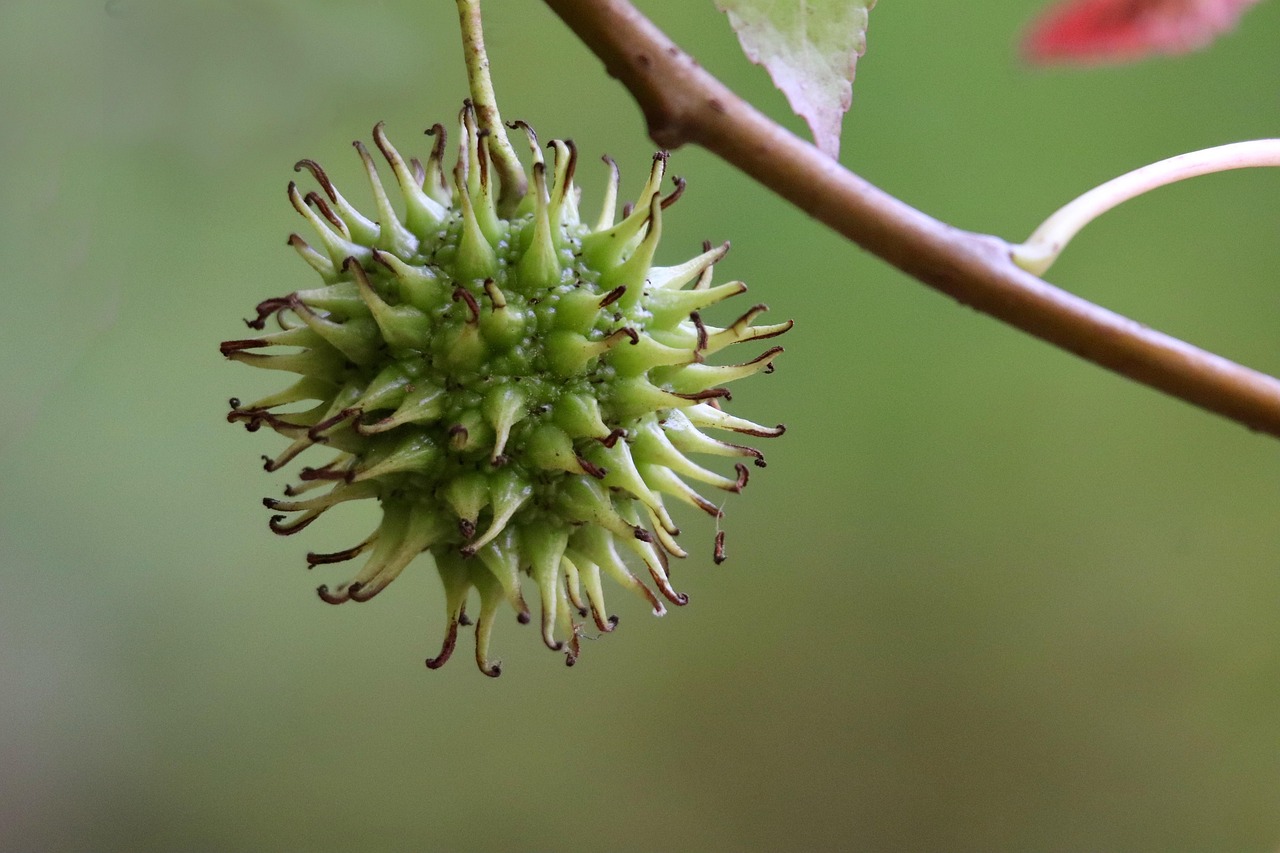Sweetgum wood is valued for its versatility. It is commonly used in furniture making, cabinetry, and decorative veneers. Additionally, its unique grain patterns make it suitable for flooring and crafts, while its durability allows it to withstand outdoor conditions.
Introduction to Sweetgum Wood

Sweetgum wood comes from the Liquidambar styraciflua tree, a native species found in the southeastern United States. This hardwood is known for its distinctive star-shaped leaves and produces a resin that has historical uses. The wood itself is appreciated for its workability and aesthetic appeal, making it a popular choice among woodworkers and craftsmen.
The grain of sweetgum wood can vary widely, exhibiting patterns that range from straight to wavy. Its color typically ranges from light yellow-brown to a deep reddish-brown, adding a warm tone to any finished product. The unique appearance and characteristics of sweetgum wood make it suitable for various applications.
Key Characteristics of Sweetgum Wood
When considering sweetgum wood for projects, it is essential to understand its key characteristics. These properties play a significant role in determining its best uses and applications. Below are some of the primary features of sweetgum wood:
- Density: Sweetgum wood has a medium density, which contributes to its durability while still being manageable for woodworking projects.
- Workability: This wood is relatively easy to work with. It can be sawed, sanded, and finished without much difficulty.
- Finish: Sweetgum wood takes stains and finishes well, allowing for a range of aesthetics in final products.
- Durability: It possesses moderate resistance to decay, making it suitable for both indoor and some outdoor applications.
- Price: Sweetgum is generally more affordable compared to other hardwoods, making it an attractive option for budget-conscious projects.
Common Uses of Sweetgum Wood
Due to its properties, sweetgum wood finds use in various applications. Below are some of the most common uses:
- Furniture: Sweetgum is popular for crafting furniture due to its attractive grain and finish. It is used in items such as tables, chairs, and cabinets.
- Cabinetry: Its workability and aesthetic appeal make it a favored choice for kitchen cabinets and storage solutions.
- Flooring: Sweetgum can be used in flooring applications where a warm, natural look is desired.
- Veneers: The unique grain patterns allow sweetgum wood to be sliced into veneers for decorative surfaces.
- Crafts and Turned Items: Woodturners appreciate sweetgum for creating bowls, pens, and other small decorative items.
Environmental Considerations
As with any natural resource, sustainability should be taken into account when using sweetgum wood. The tree is abundant in its native range, which helps maintain a balance in the ecosystem. However, responsible harvesting practices are essential to ensure that this resource remains available for future generations.
In summary, sweetgum wood is a versatile material that offers both aesthetic and practical benefits. Its diverse applications make it a valuable choice for various woodworking projects, while its unique characteristics contribute to its popularity among craftsmen and manufacturers alike.
Advantages of Using Sweetgum Wood
Sweetgum wood offers several advantages that make it a preferred choice among woodworkers and craftsmen. Understanding these benefits can help guide decisions on when to use this material for various projects.
- Availability: Sweetgum trees are widely distributed across the southeastern United States, ensuring a steady supply of this wood for commercial use.
- Aesthetic Appeal: The unique grain patterns and colors of sweetgum wood provide a visually appealing aspect that enhances the beauty of finished products.
- Versatility: This wood can be used in numerous applications, from furniture to decorative crafts, making it a flexible option for many projects.
- Workability: Sweetgum is easy to cut, shape, and sand, which allows for intricate designs and detailed craftsmanship.
- Cost-Effectiveness: Generally priced lower than many other hardwoods, sweetgum wood is an economical choice for both hobbyists and professionals.
Challenges of Working with Sweetgum Wood
While sweetgum wood has many advantages, there are also challenges associated with its use. Being aware of these potential drawbacks can help in planning and executing woodworking projects.
- Moisture Sensitivity: Sweetgum wood can be susceptible to warping or cracking if not properly dried and sealed. It is important to follow correct drying processes to maintain its integrity.
- Color Variation: The color variation in sweetgum wood can sometimes lead to inconsistencies in finished pieces. Careful selection of boards is necessary for projects requiring uniformity.
- Resin Content: The natural resin in sweetgum can cause complications when applying finishes. Users may need to experiment with different products to achieve the desired look.
Finishing Techniques for Sweetgum Wood
Proper finishing techniques can enhance the beauty and durability of sweetgum wood. Here are some recommended methods:
- Sanding: Start with a coarse grit sandpaper and progress to finer grits. This will help create a smooth surface free from blemishes.
- Sealing: Apply a wood conditioner or sealer to prevent blotching when staining. This step is particularly important due to the resin content in sweetgum.
- Staining: Choose oil-based or water-based stains depending on the desired finish. Test stains on a scrap piece first to ensure the outcome aligns with expectations.
- Finishing Options: Consider using polyurethane, lacquer, or shellac for a protective finish. Each offers different levels of sheen and durability.
Sweetgum Wood in Sustainable Practices
Sustainable practices in woodworking are increasingly important. Sweetgum wood aligns well with eco-friendly initiatives due to its abundant supply. Here are ways that sweetgum can be utilized sustainably:
- Local Sourcing: By sourcing sweetgum locally, you reduce transportation emissions and support local economies.
- Responsible Harvesting: Selective logging ensures that trees are harvested without depleting forests. This practice helps maintain biodiversity and ecosystem balance.
- Recycling and Repurposing: Utilizing reclaimed sweetgum wood from old furniture or structures can reduce waste and give new life to materials.
Cultural and Historical Significance of Sweetgum Wood


The cultural and historical aspects of sweetgum wood add another layer to its value. Indigenous peoples historically used the resin for medicinal purposes and crafting items. Today, this tradition continues as artisans explore its applications in modern crafts. Understanding these historical contexts can deepen appreciation for this versatile wood.
Overall, sweetgum wood’s unique characteristics, advantages, and sustainable practices position it as an excellent choice for various woodworking endeavors. Whether working on furniture, cabinetry, or crafts, the richness of sweetgum wood provides both beauty and functionality.
Crafting with Sweetgum Wood
Crafting with sweetgum wood offers unique opportunities for both amateur and professional woodworkers. Its distinct characteristics allow for a range of creative projects. Here are some popular crafting applications for sweetgum wood:
- Wood Turning: Sweetgum’s workability makes it an excellent choice for woodturning projects. Items like bowls, lamp bases, and decorative vases can be crafted easily.
- Small Furniture Pieces: Due to its strength and aesthetic appeal, sweetgum is suitable for making smaller furniture items such as side tables and stools.
- Home Décor: From picture frames to wall art, sweetgum wood can be used creatively to enhance interior spaces.
- Musical Instruments: Some artisans use sweetgum wood in crafting instruments such as ukuleles and guitars, taking advantage of its tonal qualities.
Sweetgum Wood in Furniture Design
The use of sweetgum wood in furniture design is becoming increasingly popular due to its unique grain and coloration. Here are some considerations for using sweetgum in furniture:
Design Aesthetics
Sweetgum wood can exhibit a wide variety of grain patterns, allowing designers to create visually interesting pieces. The natural variations can be highlighted through careful selection and finishing techniques. Consider the following:
- Grain Patterns: The wood can feature straight, wavy, or even interlocking grains, which add depth to the design.
- Color Variations: The rich tones of sweetgum can complement various styles, from rustic to contemporary.
Structural Integrity
The density and strength of sweetgum wood make it a reliable choice for furniture that requires durability. However, it is essential to consider:
- Joinery Techniques: Proper joinery is crucial to ensure the longevity of furniture made with sweetgum. Techniques like mortise and tenon joints work well.
- Weight Support: While sweetgum is strong, careful calculations are necessary when designing larger pieces to ensure they can support weight effectively.
Maintenance and Care of Sweetgum Wood Products
Caring for sweetgum wood products will help maintain their beauty and longevity. Here are some maintenance tips for items made from sweetgum:
- Regular Cleaning: Use a soft, damp cloth to wipe down surfaces. Avoid harsh cleaners that can damage the finish.
- Avoid Excess Moisture: Prolonged exposure to water can cause warping or damage. Ensure that surfaces are dried promptly if they come into contact with moisture.
- Reapply Finish: Depending on the use, consider reapplying finish every few years to protect the wood and enhance its appearance.
- Avoid Direct Sunlight: Prolonged exposure to direct sunlight can fade the color of sweetgum wood. Position furniture away from direct sunlight or use window treatments.
Innovative Uses of Sweetgum Wood in Art and Design
Beyond traditional woodworking, sweetgum wood has found its way into innovative artistic expressions. Artists and designers are exploring its properties creatively:
- Sculpture: Sweetgum’s unique grain makes it a fascinating medium for sculptors, who can create intricate pieces that showcase the material’s natural beauty.
- Mosaic Art: Artists use small pieces of sweetgum wood to create stunning mosaics, combining different shades and grains for visual impact.
- Mixed Media Art: Sweetgum can be combined with other materials, such as metal or glass, to produce contemporary art pieces that challenge traditional boundaries.
The adaptability of sweetgum wood in various artistic endeavors illustrates its potential beyond conventional applications. Its unique properties encourage creativity and innovation among artists, making it a valuable material in numerous fields.
Future Trends in Sweetgum Wood Usage
As industries evolve and sustainability becomes a priority, the use of sweetgum wood is likely to expand in innovative ways. Here are some potential future trends regarding its applications:
- Eco-friendly Furniture: As consumers increasingly seek sustainable options, sweetgum wood’s availability and workability make it an attractive choice for environmentally conscious furniture production.
- Biodegradable Products: With a growing emphasis on reducing plastic waste, sweetgum wood may be used to create biodegradable products, offering a natural alternative to synthetic materials.
- Collaborations with Technology: The integration of smart technology in furniture design may see sweetgum wood being utilized alongside modern materials to create functional and aesthetic pieces.
- Art Installations: As artists continue to innovate, sweetgum wood may become a staple in large-scale public art installations, highlighting its natural beauty while promoting sustainable practices.
Sweetgum Wood in Education and Community Projects
<
p>Sweetgum wood can also play a significant role in educational settings and community projects. Schools and organizations can utilize this material for various initiatives:
- Hands-on Learning: Woodworking classes can incorporate sweetgum to teach students about craftsmanship, sustainability, and the value of local materials.
- Community Art Projects: Local artists can collaborate with communities to create public art pieces using sweetgum wood, fostering creativity and community spirit.
- Recycling Initiatives: Workshops focused on repurposing sweetgum wood can educate the public on sustainable practices while providing practical skills.
Final Thoughts
Sweetgum wood stands out as a versatile and valuable material that offers numerous applications across various fields. Its aesthetic appeal, durability, and workability make it an excellent choice for furniture, crafts, and artistic endeavors. Moreover, the environmental considerations surrounding sweetgum wood use highlight its importance in promoting sustainability within the woodworking industry.
The potential for innovation in the use of sweetgum wood continues to grow. From eco-friendly furniture designs to community art projects, this unique wood can inspire creativity while supporting responsible practices. As more individuals and businesses recognize its benefits, sweetgum wood is poised to have a lasting impact on the woodworking landscape.
Ultimately, understanding the characteristics, advantages, and applications of sweetgum wood equips artisans, designers, and consumers alike with the knowledge to make informed choices. By embracing this remarkable material, we can celebrate both its beauty and its role in sustainable practices for the future.
